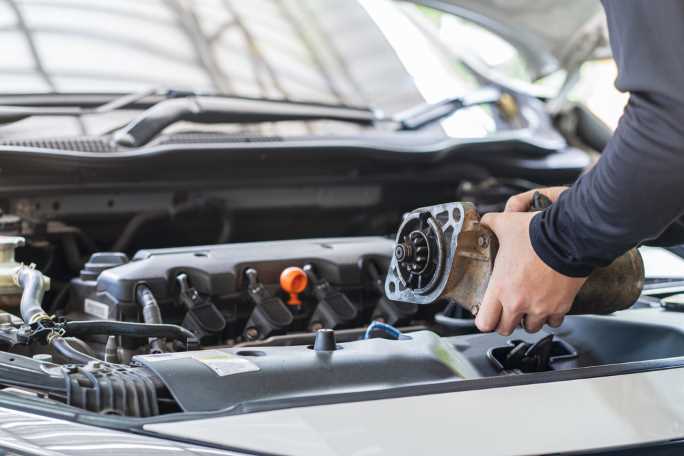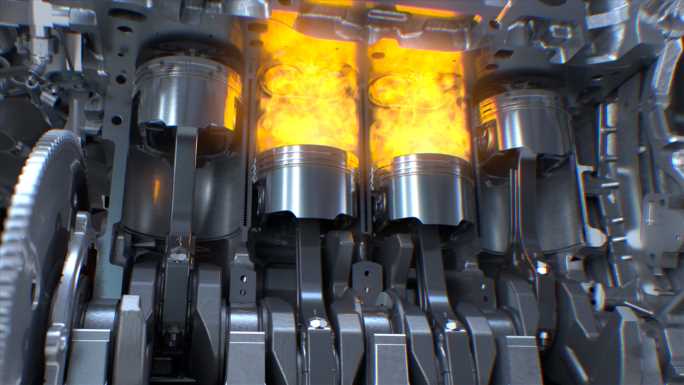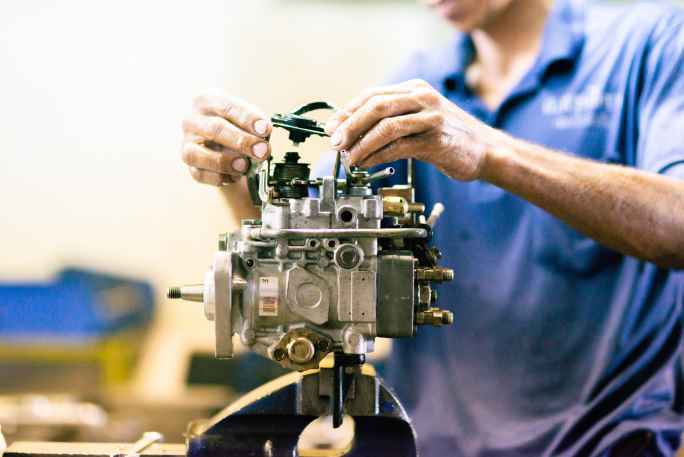Have you ever tried to start your Silverado, turned the key, but discovered that your car would not start?
Maybe that’s not even the first time you would experience Chevy Silverado starting problems.
We understand how frustrating these problems can be.
You don’t need to worry; we’ve provided common problems and solutions to help you navigate your way.
What Can Cause an Engine not to Start?
Failure of an engine to start is a common problem among vehicle owners, and so many factors could cause the problem.
As we know, the engine is the heart of a vehicle, enabling it to move from one place to another.
Once your engine fails to start, check your gas level and engine oil.
If it is not one of those problems, then it could be attributed to the following-
- Drained Battery
- Faulty Ignition switch
- Bad fuel pump
- Failed Catalytic converter
- Oil leaks
- Spark problem
- Faulty wiring
- Bad filers
- Poor oil maintenance
- Damaged starter motor
These are the major causes of failure of your engine starting problems.
However, there are still more causes that can lead to this problem.
If your ignition problem is not traced to any of these, you should take your vehicle to a professional for proper diagnosis.
Chevy Silverado Starting Problems and Solutions
When you have a problem starting your Chevy Silverado truck, it is usually a sign of some problems within its system.
Most starting problems are related to engine issues and poor maintenance culture.
The engine comprises many parts and compartments, which may be hard to maintain.
It does not mean that all ignition problems are related to the engine.
Some are caused by external parts of the vehicle, like the battery, starter motor, and many more.
The starting problem could also be related to fuel and air supply to the engine.
As we know, the engine runs efficiently when there is a proper mixture of air and fuel.
You may have an ignition problem once this can not be done properly.
Some starting problems can be related to your Chevy Silverado, and they include the following-
Problem 01: No Crank, No Start
Problem 02: Crank But will not Start
Problem 03: Starter will not Stop Cranking
Problem 04: The engine will not Start When Hot
These are the major starting problems that your chevy Silverado may have or might be having.
The no crank, no start problem is a major starting problem attributed to Silverado trucks and other vehicles.
The problem occurs when your vehicle does not make the ignition sound when there is an attempt to start it.
This problem could be attributed to some damaged parts of the vehicle.
One major cause of this is a dead battery.
The next problem is that the crank will not start.
It means your engine tries to start by making the ignition or cranking sound but fails to start.
This problem is quite common and could be caused by simple or major causes.
The starter will not stop cranking, which means that when you attempt to start your vehicle, continuous cranking goes on for some time.
This problem could be traced to a bad starting relay contactor relay coil.
Finally, in this aspect, the engine will not start when the hot problem is mainly related to the crankshaft and its sensor issue.
There are also other related causes of this problem.
01. No Crank, No Start

Have you ever tried to start your car and received no response?
It means the starter motor will not turn over the engine when it fails to respond to the key turning or fails to respond when you use the start button.
There may be several reasons for your car to behave in such a manner.
Some of the reasons may include-
- Dead battery
- Problem with the power cable
- Engine failure
- Bad spark plugs
The most significant cause of this problem is a bad starter motor; below is how you can fix it.
Solution
01. Open up your fuse box: Try to get a fairly thick wire and stipe it quite a bit when you open it up.
02. Find the Starter in the fuse box: the starter is right around PIN 87 of the fuse box cover.
You will need to take out the relay at that port.
Wrap the wire around the relay terminal and put it back into the port.
03. Turn the Key to the “on” position.
After turning the key on, the other part of the wire should be connected to the positive battery terminal, which will turn your car on.
02. Crank But Won’t Start

The engine’s repetitive chirping sound is the starter when you want to start your car and turn the key.
It is trying to ignite the engine and ultimately allow it to create power that will be used to run the vehicle.
That chirping sound is called “cranking,” It is made because your car’s starter is doing its job, but the engine refuses to do its job.
So, what if the engine crank, but the engine will not start on its own?
That means a fault in the engine itself hinders it from getting started.
This problem could be related to fuel-related problems. Some of the problems may include:
- Bad fuel injector
- Clogged fuel filter
Other causes could cause your truck to crank but not start.
Solution
01. Turn the key to the on position
You first want to turn the engine on and ensure the engine light is on.
You should watch the RPM if your computer senses the engine’s rotation.
Check your crank sensor. Ensure your gas tank is full.
02. Hold and check the injector for sparks
Pull off the coil, connect the tester, and check for sparks.
If there is no spark, then you should replace the fuel injector.
03. Check the fuel pressure
You need a pressure gauge to check for this.
You can get the vehicle to start if it has a bad fuel pump when you have a system.
It would help if you banged on the fuel tank while cranking it.
04. Check fuel filter
Fuel filters are liable to get clogged with dirt and other external materials.
You should check the filter regularly and clean them.
If they are bad, make sure to replace them.
03. Starter Won’t Stop Cranking

If your starter doesn’t stop cranking, it won’t stop running; the reason could be that the starter relays have stuck together.
Solutions
01. Pull the positive cable of the battery.
02. Work on the starter solenoid.
You need to get the trigger wire that connects to the starter and link it to the solenoid terminal.
Run a relay from the battery terminal to the relay.
Run the other relay with wire to the starter.
03. Connect the positive terminal to the battery side of the terminal
A cable will be needed for this connection.
Look at the starter switch and connect it to the tumbler.
04. Engine Won’t Start When Hot

You start your Chevy Silverado when it’s hot, but it refuses to start, takes a long time, or misbehaves before it starts.
Reasons for these could be a gas problem with the fuel pump; your car may lose fuel pressure, like the fuel injector, and it could be the Engine Control Module (ECM) at fault.
When the engine gets hot, the ECM could start to malfunction.
Solution
01. Ensure the fuel pump is in good condition
A fuel pump on the engine. It is a direct fuel injection.
When the engine runs for a long time, the pump gets warm, and resistance increases.
02. Ensure the proper functioning of the Engine Control Module (ECM)
The computer system may work fine when cold but may act otherwise when it’s warm.
It’s close to the engine, and the implication is that it will not turn on when it is malfunctioning.
03. Test the fuel pressure sensor
This is needed to ensure your Silverado has steady fuel pressure.
FAQs
Why is my car cranking but not starting?
If your car cranks but fails to start, it could be the fuel not getting to the engine.
Reasons for this could be dirty fuel injectors, Insufficient Compression, Clogged Fuel injectors, or bad fuel pumps.
What are the signs of a bad battery?
Signs of bad battery are known through the engine cranking sounds, absence of interior light and no sounds, and Dim headlights.
Some of these symptoms could also be related to a bad alternator.
Final Thought
We have covered the most common Chevy Silverado starting problems.
No crank, no start, crank but will not start, the starter will not stop cranking, and the engine will not start when hot.
Be reminded that you could avoid most of the starting problems.
Lastly, we discussed how you could solve these problems.
